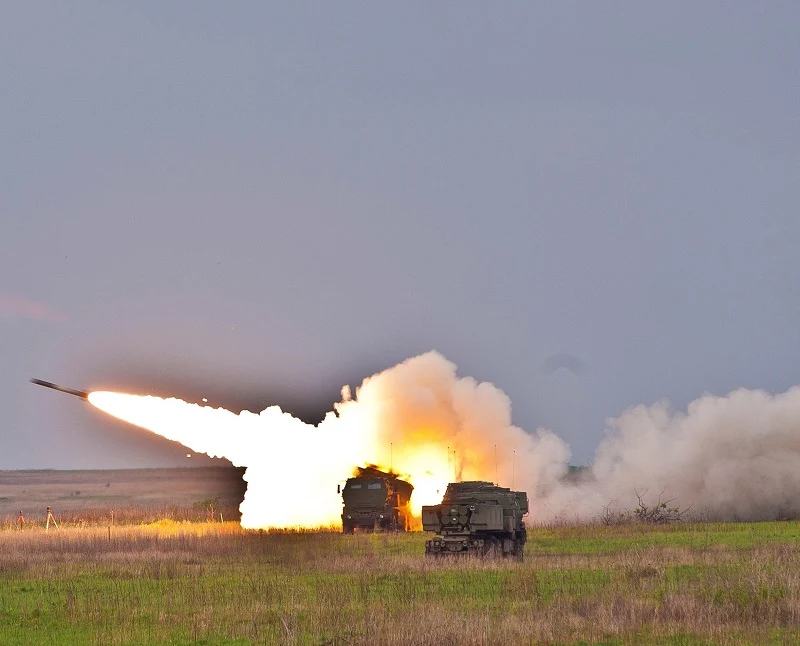Has the arrival of the High Mobility Artillery Rocket System (HIMARS) changed the dynamics of the ongoing war between the Russian and Ukrainian forces, if not its course? Yes, if statements from both sides which have stepped up the ante with some heavy fighting over the past few days are to be believed.
On Monday, the Russian Defence Ministry claimed that its high-precision, long-range, sea-based Kalibr missiles have destroyed the Ukrainian ammunition depots in Radushnoye village of Dnepropetrovsk region which had under its roof the HIMARS multiple rocket launchers supplied by the United States to Ukraine.
It was not the first time that the Russians had targeted the Multiple Launch Rocket System (MLRS) and the precision munitions which had arrived in its neighbouring country on June 23.
Last week, the Russian forces said that its high-precision air-launched missiles had destroyed two US-made HIMARS multiple launch rocket launchers and two ammunition depots for them in the settlement of Malotaranovka in Donetsk People's Republic.
"The enemy suffers significant losses in all directions," Russian Defence Ministry spokesperson Major General Igor Konashenkov said on Tuesday during his daily briefing on the conflict.
He added that the Russian aircraft, missile forces and artillery have hit Ukraine military's three command posts, three ammunition depots, artillery units at firing positions in 97 districts, as well as manpower and military equipment in 111 districts in the last 24 hours.
Moscow also claimed that the American-made and supplied HIMARS was used in the Monday evening's strike by the Ukrainian army at Novaya Kakhovka in the Kherson region which left seven dead and over 60 injured.
The Lockheed Martin HIMARS is considered the most technically advanced and sustainable artillery solution which allows for the launching of multiple, precision-guided rockets, hitting targets up to 70 kilometers away.
With the cutting-edge technology in its arsenal, Kyiv has the opportunity of striking Russian locations way beyond the front lines.
"HIMARS have arrived to Ukraine. Thank you to my colleague and friend @SecDef Lloyd J. Austin III for these powerful tools! Summer will be hot for russian occupiers. And the last one for some of them," Ukraine's Defence Minister Oleksiy Reznikov had tweeted last month.
Meanwhile, even as US President Joe Biden announced more security assistance to Ukraine – including more artillery and ammunition, counter-battery radars, more HIMARS and additional ammunition for the multiple launch rocket system – Ukrainian President Volodymyr Zelenskyy has asked for more supply of weapons, in particular the artillery systems.
"I talked about the artillery with all the partners who are ready to talk with us and provide strong support. Artillery is really not enough," Zelenskyy said on Monday following a meeting with Dutch Prime Minister Mark Rutte in Kyiv.
Washington has already delivered eight HIMARS to Kyiv and four more launcher units will be delivered soon as per the package while the US military continues to impart HIMARS training to the Ukrainian troops.
Our "long hand" – made in the USA – doing its work.
Direct shot.#HIMARS
Footage by the General Staff of the #UAarmy pic.twitter.com/Fa3lUJJsO9— Defence of Ukraine (@DefenceU) July 4, 2022
"The HIMARS system is a very high-end system and so there was a — I would say weeks long training process where Ukrainian crews needed to be trained on these systems. They were new to them because it's not a Soviet legacy system and it's a higher end capability," a senior US Defence official said during a media briefing on Friday.
Also Read: PM Modi to attend first India-Israel-UAE-USA leaders' summit




















